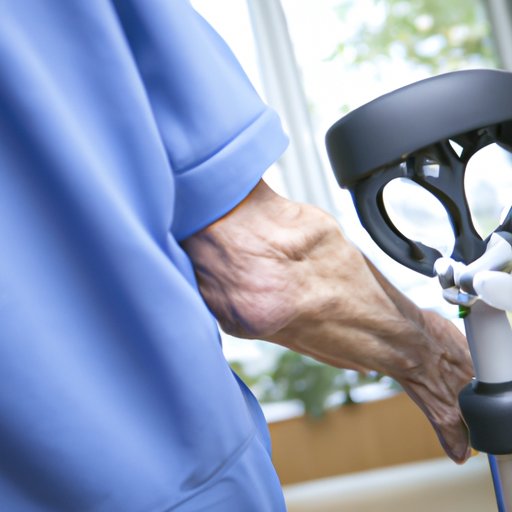Introduction
Hip replacement surgery is a major life event that can significantly improve quality of life for those who suffer from chronic hip pain or disability. Recovery from the procedure requires a significant amount of time and effort, but getting back behind the wheel is an important step in regaining independence. In this article, we’ll explore the timeline for driving after hip replacement surgery, as well as tips for preparing for your return to the roads.
Driving After Hip Replacement: How Soon Can You Get Back Behind the Wheel?
Before you even consider getting back behind the wheel, it’s important to understand the basics of hip replacement surgery. During the procedure, a surgeon will replace the damaged joint with an artificial one made of metal, plastic, or ceramic. The entire process typically takes two to three hours and requires several weeks of recovery before you can resume regular activities.
When Is It Safe to Drive After Hip Replacement Surgery?
Most patients are able to get back behind the wheel within four to six weeks of their hip replacement surgery. However, this timeline can vary depending on the individual’s level of healing, physical therapy progress, and doctor’s recommendations. Your doctor will evaluate your recovery and provide specific instructions on when it’s safe to get back on the road.

Recovering From Hip Replacement Surgery: Tips for Getting Back on the Road
Once you have the go-ahead from your doctor, there are steps you can take to prepare for your return to the roads. Here are some tips for driving after hip replacement surgery:
- Practice driving in familiar areas with few distractions.
- Start out with short trips and gradually increase the distance.
- Make sure you’re comfortable with all aspects of driving, including turning, braking, accelerating, and parking.
- Use pillows or cushions to support your leg and reduce discomfort while driving.
- Avoid long drives until you’ve fully recovered.
What Are the Guidelines for Driving After Hip Replacement Surgery?
Your doctor will provide guidelines for when it’s safe to drive after hip replacement surgery. These may include:
- No driving until you can walk without a cane or walker.
- No driving if you are taking narcotic pain medications.
- No driving if you are experiencing any type of pain or discomfort.
- No driving if you are still receiving physical therapy.
Preparing to Drive Again After Hip Replacement Surgery
Before getting back behind the wheel, it’s important to make sure you’re physically and mentally prepared. Make sure you are comfortable with all aspects of driving, such as turning, accelerating, and braking. If you are still experiencing pain or discomfort, take a few days off from driving and talk to your doctor about other options for managing your symptoms. Additionally, you should arrange for someone to accompany you on your first few drives, as having a passenger can help reduce stress and anxiety.

What to Expect When Returning to Driving After Hip Replacement Surgery
In addition to physical preparation, it’s important to know what to expect when returning to driving after hip replacement surgery. You may experience some discomfort or stiffness when you first start driving, so make sure you take frequent breaks and avoid long drives until you are fully healed. Additionally, be mindful of your posture while driving, as slouching can put extra strain on your hip.
How Long Should You Wait Before Driving After Hip Replacement Surgery?
The amount of time it takes to recover from hip replacement surgery varies from person to person. Generally speaking, most people can expect to wait four to six weeks before they are ready to drive. However, it’s important to follow your doctor’s instructions and not rush the process. Physical and mental readiness are key factors in determining when you are ready to drive again.
Conclusion
Getting back behind the wheel after hip replacement surgery is an important step in regaining independence. While it’s important to follow your doctor’s instructions and wait until you are fully healed, the process can be made easier by following the tips outlined above. With the right preparation, you can look forward to getting back on the road and enjoying the freedom and mobility that comes with it.
(Note: Is this article not meeting your expectations? Do you have knowledge or insights to share? Unlock new opportunities and expand your reach by joining our authors team. Click Registration to join us and share your expertise with our readers.)
